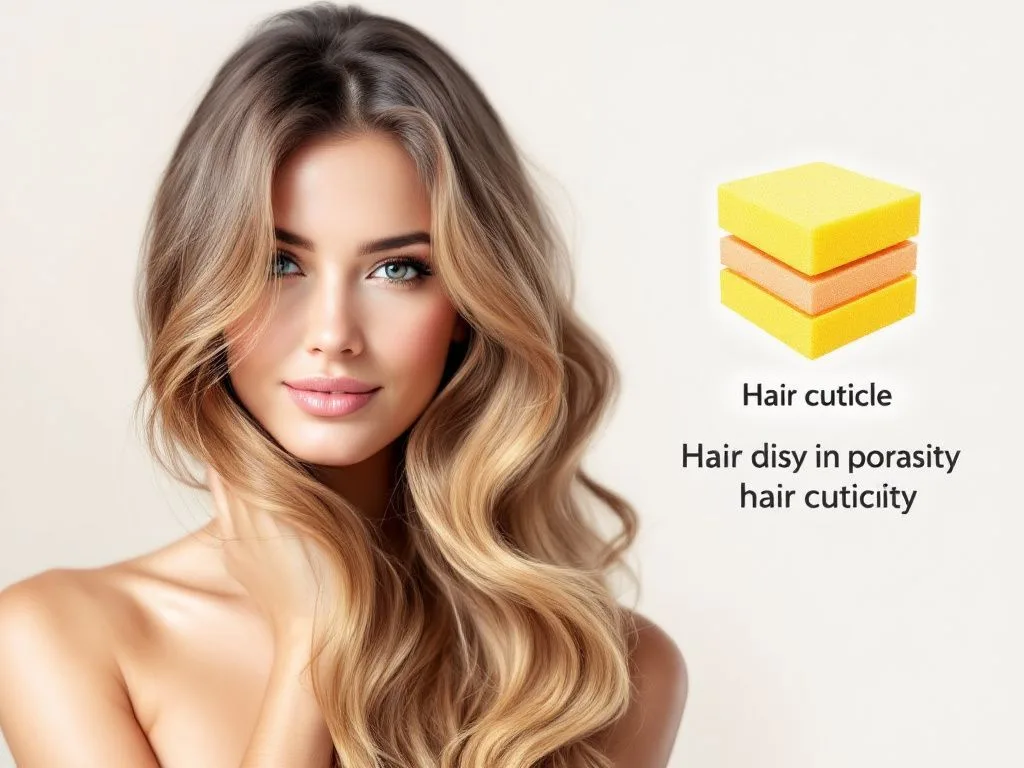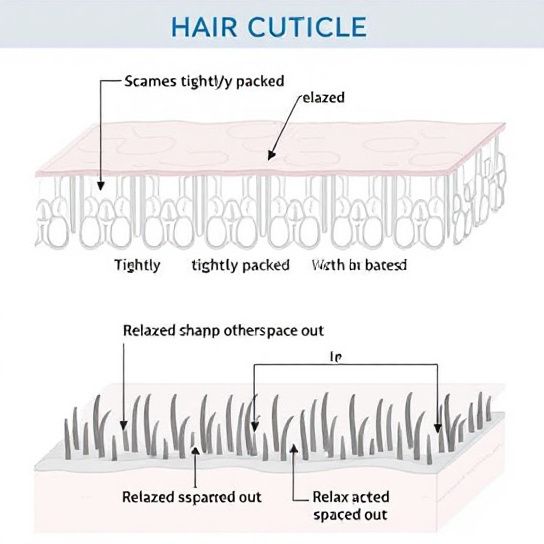
Ever found yourself trying out every “miracle product” under the sun, only to feel like nothing really turns out the way you’d hoped? Yeah, we’ve all been there, staring at overpriced bottles in our bathroom that promise luscious hair but deliver anything but. The culprit might not be the products themselves but something simpler—your hair’s porosity. Now, don’t let that word scare you off. It’s not as complex as it might sound.
Porosity boils down to how your hair absorbs and retains moisture. Think of it like a sponge. Some sponges soak up everything in seconds, and others, well, it feels like you’re waiting an eternity for any absorption to happen. That sponge-like aspect of hair is due to the hair cuticle—those tiny overlapping scales that guard the inner structure of your hair. So, buckle up, grab a cup of whatever makes you comfortable, and let’s dive into the world of low vs high porosity hair.
What is Hair Porosity?
Okay, start by picturing your hair looking like these fancy building shingles. These shingles are your hair cuticles. They open up, soak in moisture, and then close back up. Simple, right? But here’s the trick: some hair types have shingles that are super closed off and tight (we’ll call them “low porosity hair”), while others are more relaxed and spaced out (“high porosity hair”).
Once you understand this, you’ll see why some products just sit on top of your hair like an unwelcome guest and why some make your hair look pretty drab after a day—even when fresh out of the shower only moments before.
Characteristics of Low Porosity Hair
The Tight-Knit Team
If you’re carrying around low porosity hair, it’s like your hair cuticles have taken a vow of closed-off secrecy. These tightly packed cuticles make it a bit harder for moisture, and water-based products, to get inside. Imagine trying to fill a glass when someone’s holding the lid down!

Signs You’ve Got Low Porosity Hair
- Product Overload: Products just lounging on the surface of your hair, refusing to budge.
- Slow Dry Time: It takes longer for your hair to dry because water just doesn’t seem to want to leave.
- Resistance to Chemicals: Dye jobs can be hilariously unpredictable. Color tends to struggle to penetrate too easily.
- Build-Up: You might notice a visible build-up, making hair feel greasy or sticky but oddly dry at the same time.
Caring For Low Porosity Hair
Let’s cut to what you can *actually* do. When you know your hair locks out moisture, the goal should focus on increasing flexibility and giving your hair gentle nudges to intake the good stuff.
**Tips for Low Porosity Hair Care:**
- Use Heat Wisely: This type of hair enjoys the occasional warmth. Think warm water rinse or using a warm towel – like a mini sauna treatment for your hair.
- Lightweight Products: Steer clear from those heavy, creamy hair butters. Opt for lighter leave-in conditioners—let your hair breathe a little.
- Clarifying Shampoos: Use these periodically to kick product overload out the door. They’re tough on buildup but gentle on your precious follicles.
- Spaced Out Protein Treatments: Less is more. Remember, less protein equals healthier, less brittle strands.
Characteristics of High Porosity Hair
The Open Invitation
High porosity hair, oh dear. It’s been through a lot, blaming only the universe would be wrong. These cuticles are more open—traffic is constantly streaming in and out. Although high porosity might make conditioning easiest, it’s like someone left the water running—moisture comes as quickly as it goes.
Signs of High Porosity Hair
- Instant Wet, Instant Dry: It gets wet faster, but then dries even faster. Bizarre, right?
- Tangles R Us: More prone to tangles—you’ll find yourself best buddies with detangling sprays.
- Fades Like Crazy: Hair color, for those dyed locks, tends to fade at light speed. Full turbo mode.
- Frizz Fiesta: High porosity hair can exhibit quite the frizz, screaming for help with maintaining moisture.
Caring for High Porosity Hair

Don’t sweat, high porosity can totally be managed—you’ve just got to invite moisture and then convince it to stick around a bit longer.
**Strategies for High Porosity Hair:**
- Deep Condition Like a Pro: Every week, devote some “you” time into using a deep condition treatment. Consider thicker, creamy conditioners as potential allies.
- Layer Up: Using the LOC method—Leave-in conditioner, Oil, Cream—forms a protective moisture-trap shell.
- Seal Those Ends: Special attention to the ends using olive oil or shea butter. Think of it as drawing a line in the sand for moisture.
- Avoid Heat: More heat only transforms high porosity concerns into nightly ‘bad-hair-related’ nightmares. If using heat: low settings. Not negotiable.
How to Check Your Hair’s Porosity
So now you’re wondering where you fit. Here’s a quick coffee-table experiment:
- Grab a strand of your treasured mane and a cup of water.
- Gently drop that strand into the water.
- Wait a quick boss-level five minutes.
What Do Your Results Say?
- Floats Like A Socialite: Low porosity, reluctant to dive right into any commitment (or water).
- Sinks At a Steady Pace: Medium or normal porosity. Congrats, your healthiness balance game is on.
- Plummets Like a Daredevil: High porosity, ready to rock and roll with moisture but job incomplete when it comes to holding it in.
Seriously though, this simple test isn’t foolproof, but it can add to the clues about your natural porosity drama.

Embracing Your Hair’s Porosity
Trust me on this one—you’re not aiming to change your porosity. Hair rarely listens like that. Instead, the plan is to embrace the way your hair is wired naturally, while using tailor-made tricks to show your strands the love and understanding they crave.
Structured TLC Approach
Let’s talk structure, starting a tailored TLC (Tender Loving Care) routine. That could start with a two-week trial—just focusing on moisturizing oils for high porosity or gradually introducing heat for low porosity folks. Turn observations into your personal hair handbook.
Celebrating progress means accepting those myriad of selfies you’ll tangibly trade for in-the-moment insights over whether certain recommended tips feel right. Hairstyles will comply effortlessly, each confident swoosh presenting a testament to what’s been learned through understanding and nurturing each hair fiber’s quirky requirements.
The Final Strand
So there you have it. Hair porosity isn’t some alien mystery designed to boggle you. It’s a genuine part of the ongoing adventure that is mane-management. Whether you’re caught in the gated community of low porosity hair or living the fast-paced life of high porosity habits, you’ve got this.
Take your time, communicate with those locks of yours more as teammates than elusive shadow. Expect some bumps, invite lessons along the way. In cultivating awareness, something magical happens: hair grows to new heights—or in this case, tenacity and glam alongside—one compassionate of individual habit at a time. Breathe. Revolutionize. Transform. You’re now fully equipped to welcome whatever hair days the winds might bring.
And as you glide forth, hair crafted in ever-glowingly vibrant understanding, remember: this ongoing dialogue with porosity isn’t finished. It’s merely freshly begun! So onwards—celebrating your unique beauty in every shade and strand!
Frequently Asked Questions
What is low porosity hair?
Low porosity hair is characterized by a tight cuticle structure, where the cuticles are tightly closed, making it difficult for moisture and treatments to penetrate the hair shaft. This type of hair can maintain moisture but has trouble absorbing new moisture due to its tightly packed cuticle layers[1][4][5).
How can I identify if I have low porosity hair?
You can identify low porosity hair through several tests. The float test involves placing a hair strand in water; if it floats, it likely has low porosity. The spray test involves spraying water on your hair; if the water beads up and doesn’t absorb quickly, it indicates low porosity. Additionally, low porosity hair takes longer to wet and dry compared to other hair types[4][5).
What are the best care tips for low porosity hair?
To care for low porosity hair, use lighter, non-greasy products to avoid build-up. Regularly clarify your hair to remove product residue. Use a hair steamer or warm water to help open the cuticles and allow moisture to penetrate. Deep conditioning with heat and using humectants like hyaluronic acid, honey, or aloe vera can also help retain moisture. Avoid using hot water and heavy oils, and consider the LCO (liquid, cream, oil) method for product application[2][4][5).
What products are best suited for low porosity hair?
The best products for low porosity hair are lightweight and hydrating. Use clarifying shampoos to remove build-up, and opt for moisturizing conditioners and masks that won’t weigh your hair down. Products containing humectants like hyaluronic acid and honey are beneficial. Avoid heavy oils and thick serums, and instead use light oils and styling products that define curls without causing build-up[1][2][5).
References


Leave a Reply